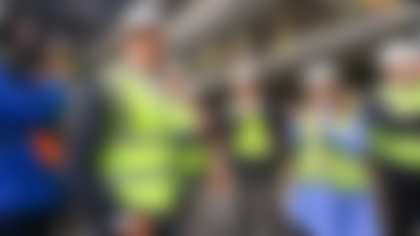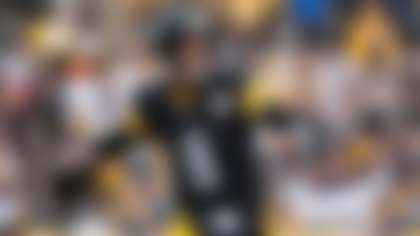The 2009 NFL Draft may be over, but it has yet to be determined if it was a success or a failure for any team. The draft can't be graded or judged for a few years, but it was certainly intriguing. Webster's dictionary defines intrigue in the following ways: 1) To excite the interest or curiosity; 2) To fascinate; 3) To perplex; and 4) An underhanded plot.
The 2009 draft at Radio City Music Hall in New York had all of those elements. Let's look at some of the intrigue surrounding the selection process.
There are many front-office executives who felt the $41.7 million guaranteed to Matthew Stafford the night before the draft was an "underhanded plot" to once and for all destroy the top of the draft. As Bill Belichick said to me on Sunday night as the draft ended, "It used to be that the top picks in the draft were a reward to the teams that needed the most help. Now they put a young man in your locker room that's the highest-paid player on your roster."
Did you notice how Belichick didn't use his first-round pick? Instead, the Patriots traded down to select four players in the second round, while they have already stockpiled three second-round picks for next year. Belichick's view of the draft is "fascinating" to me.
As for the "perplexing" aspect of the draft, the Bills had a fine weekend, but they never resolved their left-tackle situation after trading Jason Peters to the Eagles last week . When they selected at No. 11 in the first round, Michael Oher was still on the board. Even after going defense with that pick, they still had another first-round pick at No. 28 and could have jumped up to No. 23 to take Oher. The Patriots owned the 23rd pick and traded it to the Ravens, who selected Oher even though they have a talented left tackle in Jared Gaither.
Another perplexing aspect of the draft was the Jets not getting a wide receiver to help young Mark Sanchez. Sure, they didn't have a second-round pick after moving up for Sanchez (an "exciting" move in its own right), but the glaring need for a premier wide receiver still exists. The relationship with the Browns is strong and maybe leads to another intriguing idea: pursuing Braylon Edwards in the coming weeks.
As I reflect on the draft, here are the selections that I found most intriguing, round by round. Rounds 1 and 2 both get two selections apiece, followed by one per round for the Day 2 picks.
Round 1
The Raiders select WR Darrius Heyward-Bey.
They passed on a guy who had 41 touchdown receptions in two years (Michael Crabtree) for a guy who had 13 touchdowns in college. Some would call the selection curious, others would call it perplexing.
The Broncos select RB Knowshon Moreno at No. 12.
The Broncos signed three running backs in the offseason (J.J. Arrington, LaMont Jordan and Correll Buckhalter), and they are in the process of trying to build a 3-4 defense. Why would they take a running back here?
Round 2
The Lions take S Louis Delmas at the top of the second round.
Delmas is a very good player who shined at the Senior Bowl against better competition than he saw at Western Michigan, but James Laurinaitis and Rey Maualuga were still on the board. It fascinated me that he Lions passed on those players.
The Dolphins take QB Pat White at No. 44.
Miami already had an effective Wildcat package, but this move makes it even more dangerous. As Jon Gruden said to me, "If the Wildcat back can really throw, then the defense has real problems." White can really throw. He could also line up at wide receiver. I spoke with White right after he was selected and he sounded intrigued by all the possibilities.
Round 3
The Giants draft WR Ramses Barden after selecting Hakeem Nicks in the first round.
Barden is a clone of Plaxico Burress. He's 6-foot-6 and 229 pounds and he caught 50 touchdown passes in college. Many assumed Nicks was the replacement for Burress when he was taken, but it may turn out that Nicks was actually the replacement for Amani Toomer. Call this move exciting.
Round 4
San Diego selects Vaughn Martin from Western Ontario.
I was fascinated by this pick because of the brute strength, size and speed of the prospect from Canada. Any time you find an athlete in the fourth round who can run a sub-5.0 in the 40 at 333 pounds and dead-lift 345 pounds 44 times, you take the chance. This pick hit my curiosity button. With a year to work on technique, the sky is the limit for this kid.
Round 5
The Jaguars select WR Jarrett Dillard from Rice.
I talked with Dillard a few times in the weeks leading up to the draft, and this kid reminds me of a cross between Wes Welker and Wayne Chrebet. He caught 257 passes for 3,614 yards and 50 touchdowns at Rice. Welker was too small, Chrebet was too small and some think Dillard is too small. He should have been more intriguing to teams earlier in the draft.
Round 6
The Seahawks do their homework and select QB Mike Teel from Rutgers.
Teel wasn't even invited to the combine, but he was the eighth quarterback selected in the draft. Teel can throw the ball and he led his team back after a bad start last season to win seven straight games and earn a bowl bid. He is a very curious pick.
Round 7
The Lions draft LB Zack Follett out of California.
I spent time talking with Follett this spring, and it took 10 seconds to realize this guy lives and breathes football. He left college with 245 tackles, 51 tackles for a loss and 23.5 sacks. He had more sacks than most of the premier pass rushers in the draft. I was perplexed he was still available in the seventh round.
Intriguing schemes
Another bit of intrigue for me was what would happen with the three teams looking to build a 3-4 defense from scratch. The Broncos, Chiefs and Packers were all 4-3 teams built on speed, and all are looking to change up to a 3-4. The secondary is similar in both packages, so it really is the configuration of the front seven that counts. As Bill Parcells once told me, don't make the switch until you have enough of the parts.
The Broncos selected only one player, first-round linebacker Robert Ayers, for the front seven. Denver has a long way to go this year to make the full switch. Defensive coordinator Mike Nolan will be in some hybrid looks.
The Chiefs grabbed two defensive linemen, LSU's Tyson Jackson with the No. 3 overall pick and Purdue's Alex Magee in the third round. These guys will help construct the front line, and even though defensive coordinator Clancy Pendergast is a hybrid-style coach, they are closing in on the transformation.
The Packers hit the 3-4 idea pretty hard in the draft with a nose tackle, Boston College's B.J. Raji, and an outside linebacker, Clay Matthews, in the first round, and two more players for the front seven in the later rounds -- Georgia defensive end Jarius Wynn (sixth round) and Colorado linebacker Brad Jones (seventh round). I would guess that the Packers are the most ready for the move.



